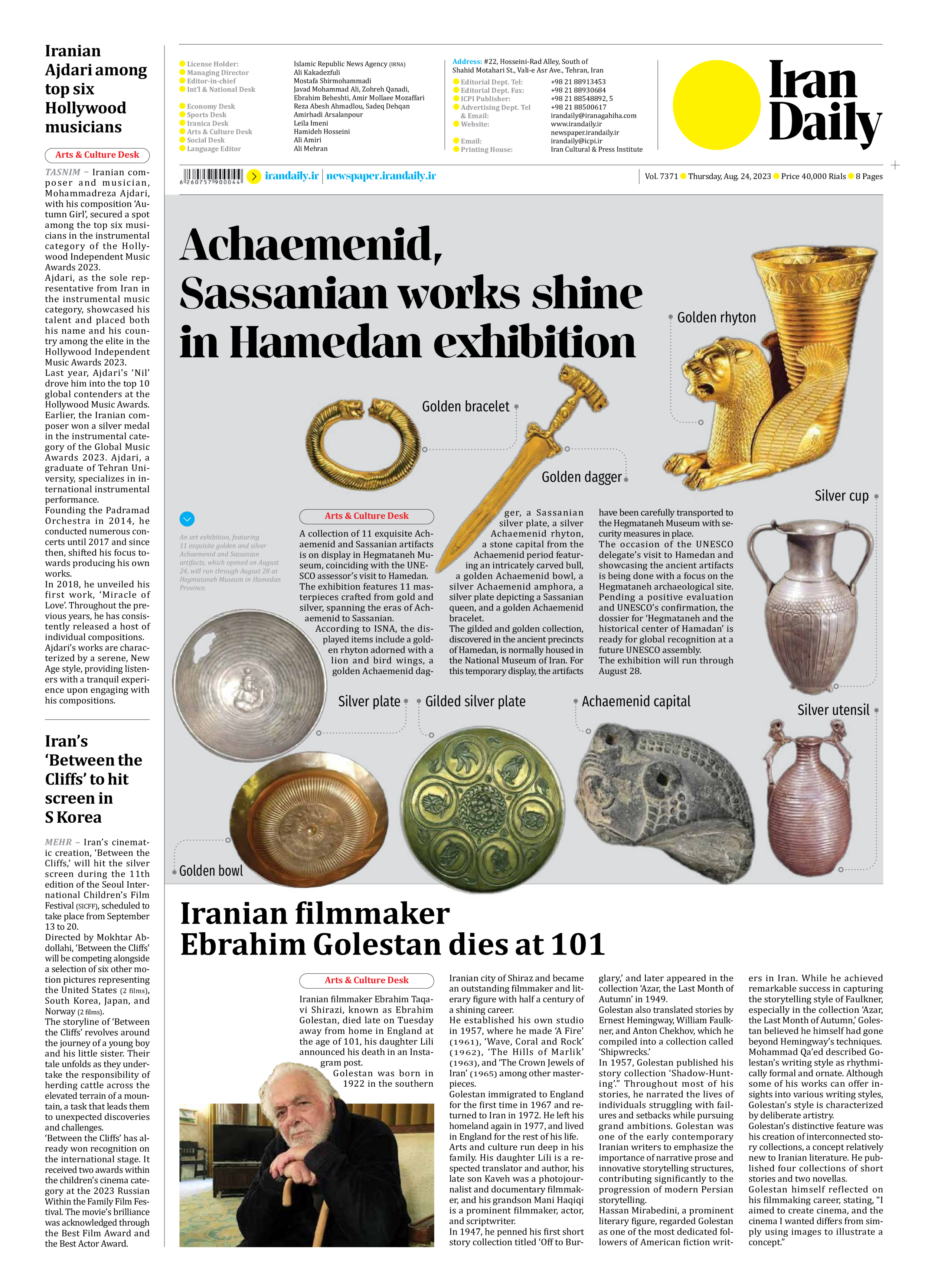
Iranian filmmaker Ebrahim Golestan dies at 101
Iranian filmmaker Ebrahim Taqavi Shirazi, known as Ebrahim Golestan, died late on Tuesday away from home in England at the age of 101, his daughter Lili announced his death in an Instagram post.
Golestan was born in 1922 in the southern Iranian city of Shiraz and became an outstanding filmmaker and literary figure with half a century of a shining career.
He established his own studio in 1957, where he made ‘A Fire’ (1961), ‘Wave, Coral and Rock’ (1962), ‘The Hills of Marlik’ (1963), and ‘The Crown Jewels of Iran’ (1965) among other masterpieces.
Golestan immigrated to England for the first time in 1967 and returned to Iran in 1972. He left his homeland again in 1977, and lived in England for the rest of his life.
Arts and culture run deep in his family. His daughter Lili is a respected translator and author, his late son Kaveh was a photojournalist and documentary filmmaker, and his grandson Mani Haqiqi is a prominent filmmaker, actor, and scriptwriter.
In 1947, he penned his first short story collection titled ‘Off to Burglary,’ and later appeared in the collection ‘Azar, the Last Month of Autumn’ in 1949.
Golestan also translated stories by Ernest Hemingway, William Faulkner, and Anton Chekhov, which he compiled into a collection called ‘Shipwrecks.’
In 1957, Golestan published his story collection ‘Shadow-Hunting’.” Throughout most of his stories, he narrated the lives of individuals struggling with failures and setbacks while pursuing grand ambitions. Golestan was one of the early contemporary Iranian writers to emphasize the importance of narrative prose and innovative storytelling structures, contributing significantly to the progression of modern Persian storytelling.
Hassan Mirabedini, a prominent literary figure, regarded Golestan as one of the most dedicated followers of American fiction writers in Iran. While he achieved remarkable success in capturing the storytelling style of Faulkner, especially in the collection ‘Azar, the Last Month of Autumn,’ Golestan believed he himself had gone beyond Hemingway’s techniques.
Mohammad Qa’ed described Golestan’s writing style as rhythmically formal and ornate. Although some of his works can offer insights into various writing styles, Golestan’s style is characterized by deliberate artistry.
Golestan’s distinctive feature was his creation of interconnected story collections, a concept relatively new to Iranian literature. He published four collections of short stories and two novellas.
Golestan himself reflected on his filmmaking career, stating, “I aimed to create cinema, and the cinema I wanted differs from simply using images to illustrate a concept.”







